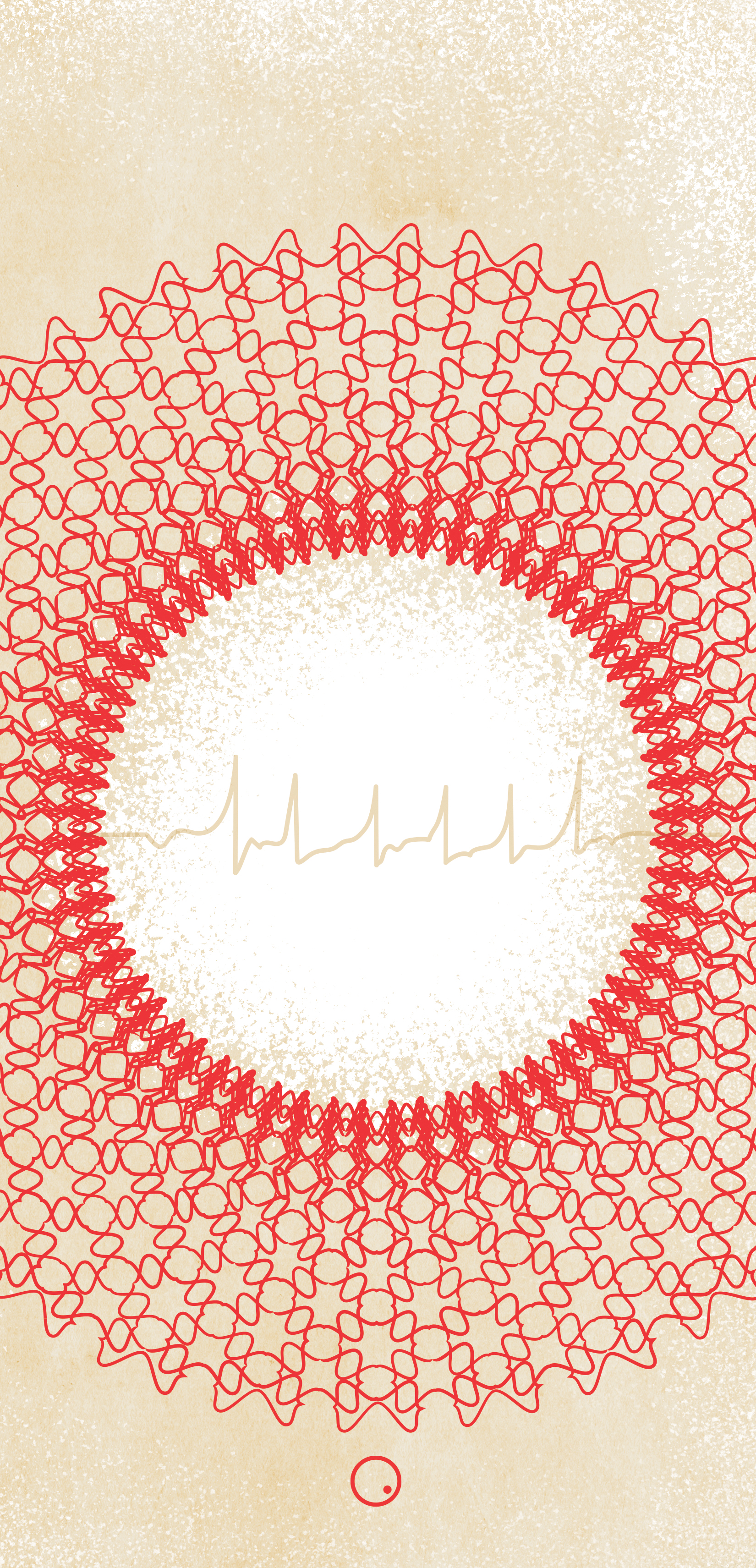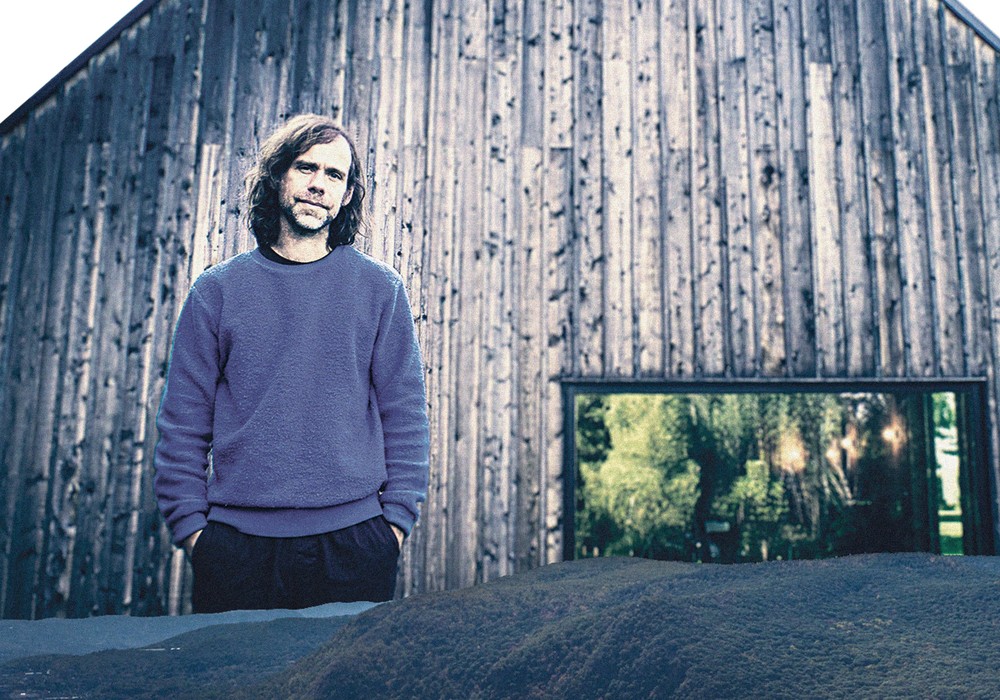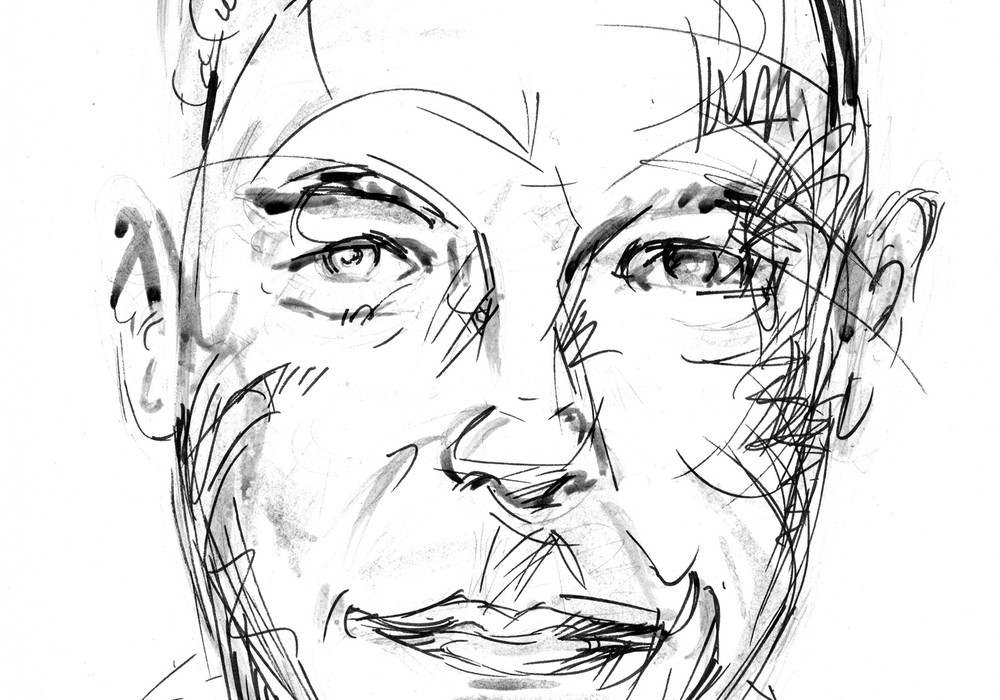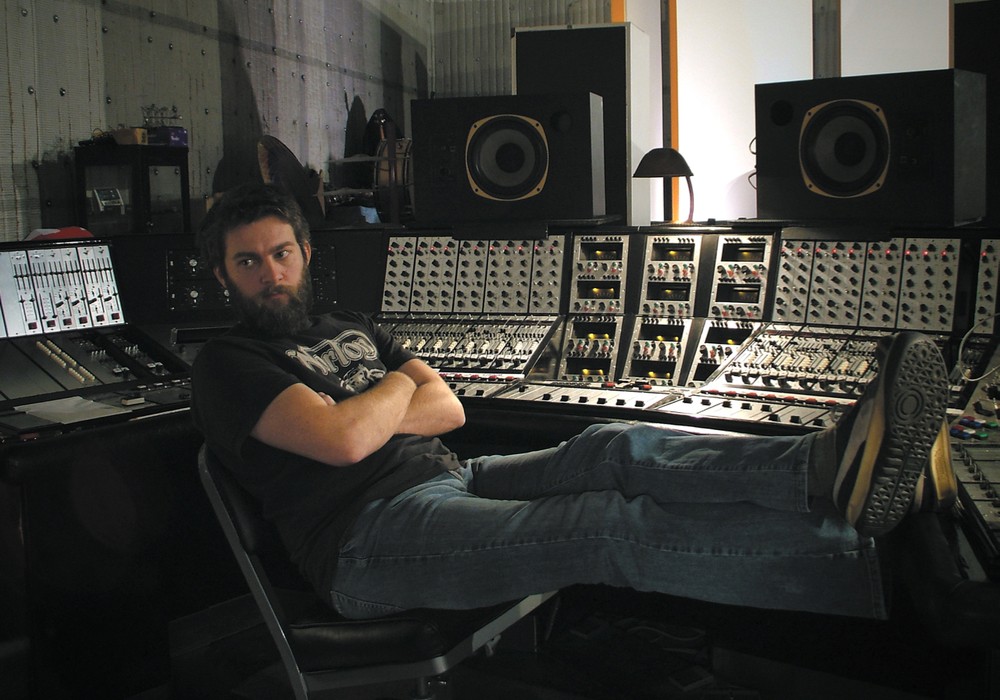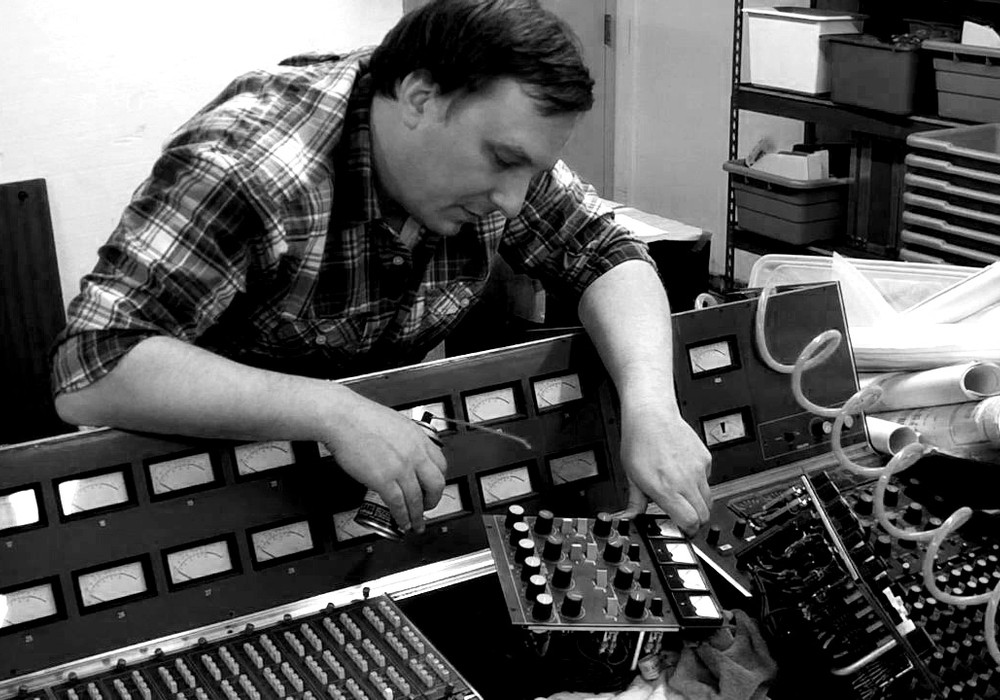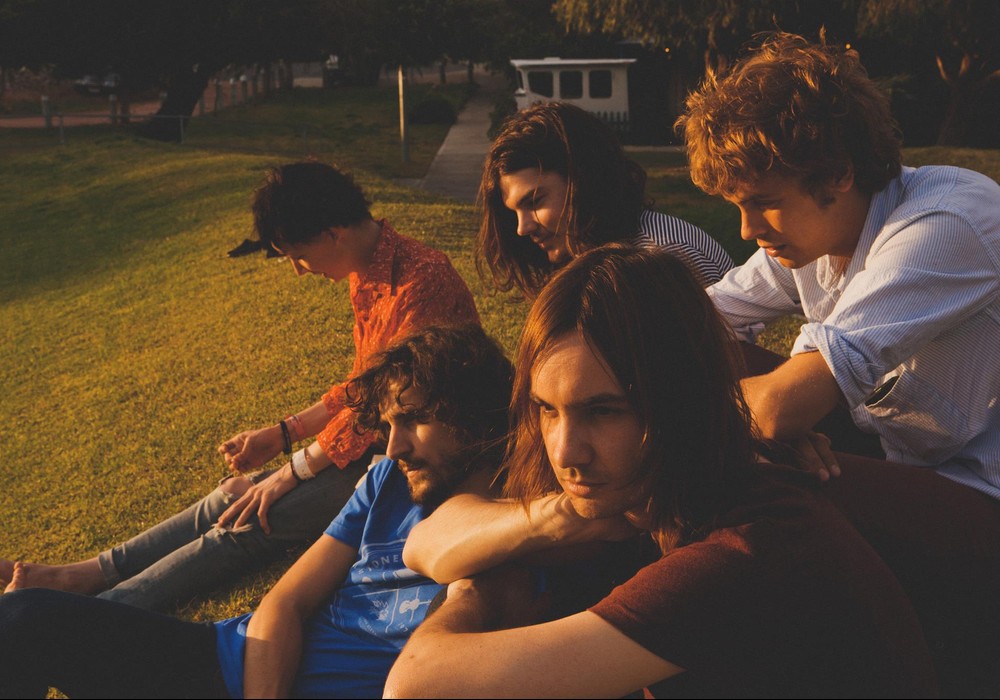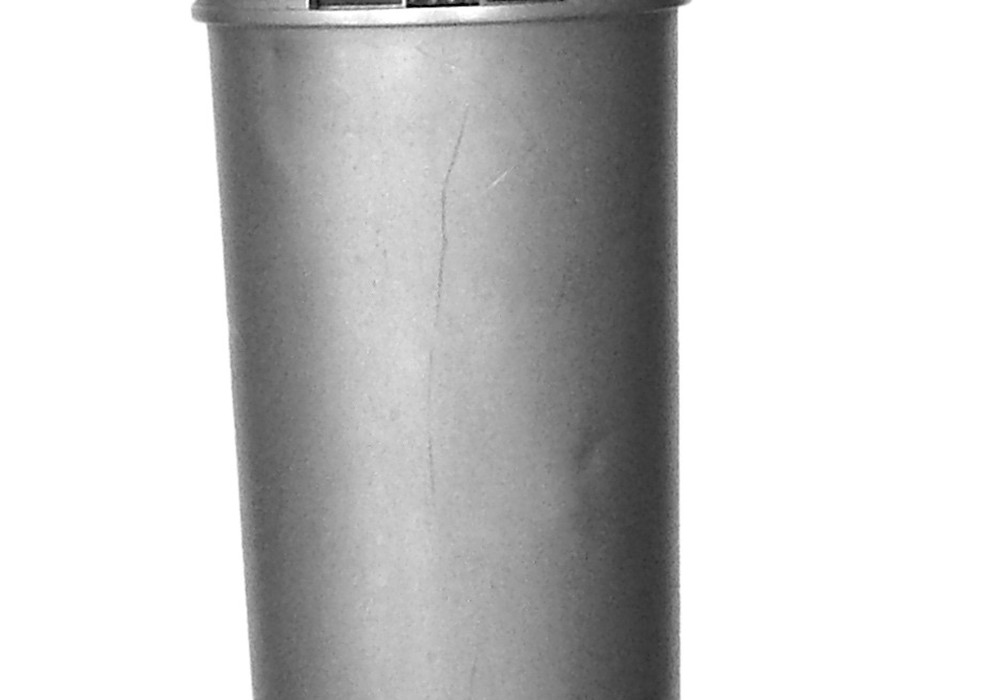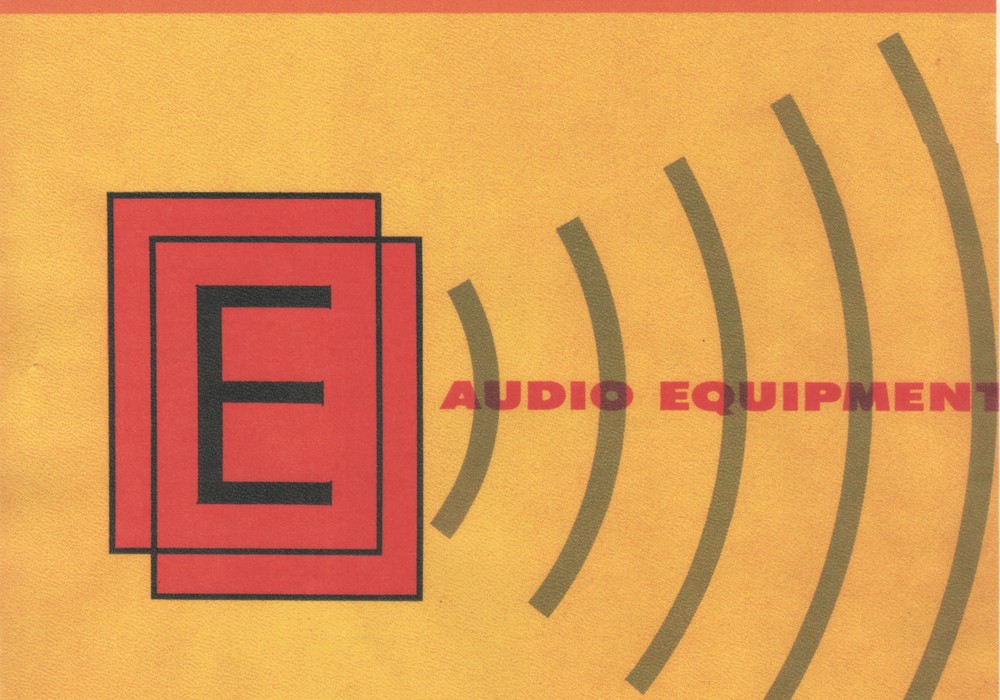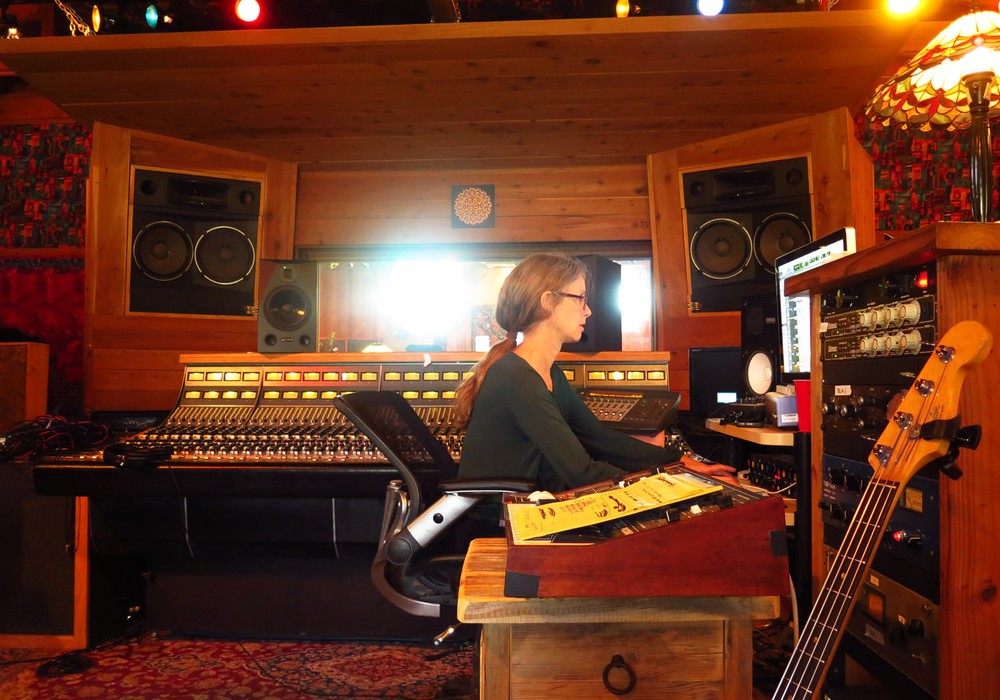Oranger may be the best self produced, home recorded band you've never heard of. When they aren't on tour with Elliott Smith, Wilco, The Apples In Stereo or R.E.M, they're tucked away in a foggy corner of San Francisco, making records that lie somewhere between The Beatles, Todd Rundgren, Chicago and Black Sabbath. Mike Drake and Matt Harris (who play most of the instruments on Oranger's albums and handle guitar, bass and vocal duties) took some time out to talk about their love of freaky gear, pop stars and Tape Op. Their new 456 song double album will be out Fall 2003.
What prompted you to guys to start recording yourselves?
MH — It just got to the point where it was expensive too go into the studio all the time.
MD — And Matt was really good at getting sounds on the eight track. He's always had a really good ear — kind of an instinct for getting sounds — it's almost obsessive. Matt's more of an engineer than I am. I'll just move stuff around until it sounds good.
[laughter]
That's probably the best thing you can do.
MD — If I start thinking about what's going on with the electrons, and how the sound waves are being converted into electrons and then into bits...it's fun if you're stoned but it's distracting if I'm trying to put a guitar part down.
In '98 you started doing the basics for "Doorway to Norway" on the 8 track?
MD -Actually I think we might have done it all on 8 track cassette — halfway through DTN we got the Ampex(? 3M) from Tiny Telephone; from (John) Vanderslice. He told us that it was from Brother Records, which was The Beach Boys' studio when they got away from Capital -
MH — I emailed Mark Linnett, the guy who does all the liner notes for Capital.
MD — And Matt asked him about the MM1000. He thought it probably was. Serial number is in the first 200. I've seen a couple documentaries and it looks exactly the same. They definitely had an MM1000
MD — Whether this is the one or not...
MH — Sure it is! (Laughter) For mythical purposes we'll say that it is.
MD — There is that thing that said, "Brian Wilson was here" on the side.... We'd be using that thing right now if we could fit it in the house, but it's humungous. I'd have to tear out a closet — I don't know if we need it that badly yet. Michael Gore was telling us- " You have got to fire it up every month so those switches don't get corroded."...we haven't done that in a year.
How did you start working with Damien Rasmussen?
MD — He did a bunch of live sound — and he second engineered on a lot of records, like engine 88. A lot of those LookOut! bands recorded at Dancing Dog. While Damien was working on our second record [Quiet Vibration Land] he was also working with this band called The Abba Teens — they're two girls and two guys and they're teenagers, they're Swedish and the original idea was for them to do all Abba tunes but do totally pumped up Euro dance versions of them — it was pretty hilarious! And Damien somehow got hooked up to do they're live sound and toured with Britney Spears. Damiean got us backstage...the back of the Shoreline is totally set up like a "Steal Your Face" Grateful Dead — behind the backstage are all these giant mushrooms and all this crazy hippy stuff — and there's all these people walking around in silver lame pants. It was really weird. Anyway, we needed someone who knew what they were doing when we got beyond eight track cassette — we didn't know anything about machines like the mm1000. With Pro Tools I think we learned it a little quicker than Damien did, because we didn't have a lot of analog habits. There's a lot of things about mic placement and picking mics — phase, all that stuff. Damien was usually pretty busy, so he'd come by for a weekend and set up mics so we could track stuff live. So that was basically how we did DTN. Then we ran the whole mix through this shitty micro limiter and took it to Fantasy to get it mastered and George Horn was like, "What did you guys do to this mix?" He was really mad, and we were like "Sorry, we thought it sounded good" — so we're total idiots! I don't think it suffered really...We got Damien to come in and mix QVL because we had A LOT of tracks. It took forever. Then we got evicted.
MH — That fucked us up.
That was a bad time for everyone in San Francisco. Something like 500 bands and 7 studios lost they're spaces in one day.
MD — 2000 people looking for practice spaces in one day. We were completely hosed. We still don't have a practice space. And we only use Pro Tools now.
Did you tend to over do it with pro tools?
MD — Yeah, We would noodle on stuff forever --""oh, let's put a sitar track on that.... And some extra percussion.... And then some background vocals"...it never ends. Eventually we started getting really pissed off, so we bought a chunk of studio time, that is, we pretend that we're on the clock. And you kind of know that you're pretending, that you're still role-playing a little bit, but it helps you kind of focus and not get too off track. It doesn't make a song anymore psychedelic to put a bunch of instruments on it. Some of the best mixes are done quickly and there are interesting things on them because there are mistakes. If you go in and you have the ability to change all that stuff — if rock history had been done by people who could infinitely tweak things, not everybody is going to pull a Ppet Ssounds out of their ass because they've been working forever on it. You're gonna get a lot of crap.
Is that a frequency analyzer?
MD — Sometimes we'll use the frequency analyzer when we're tracking -we'll play an old Chicago record, and we'll say, "How do you get a horn section to fit in the mix without stepping all over everything, and you listen to the Chicago record and you can actually see their stuff is completely narrow and right in the middle. It helps to guide you when you're eq'ing.When you have really dense mixes you kinda have to get everything to sit right. That's why Damien'sthe API's (550BA) are really cool with dense mixes. They'd take a big lump of a mix and they just divided it into three nice bands, very distinctly. It's nice to be able to stick them all in their they're own little cubbyhole.cubby whole.
So you used the API's for that?
MH — They're great! When you ran a mix through those things it was like pulling cotton out of your ear. It was incredible how the mids and the highs would just kind of snap out.
MD — It was insane — it has three knobs — the low, mid and the high. They're each notched.
MH -shelved.
MD — It was so much easier to deal with than some sweepable...
MH — fancy...
MD — ...Crazy EQ — We don't know enough like where a snare drum what frequency range it is. We don't have a chart up anywhere that tells us what that is. So having something that is very simple, that just clicks.
MH — two clicks.
MD — three is too far so we'll do two. We need clicky kind of stuff. It has to be like a guitar amp.
MH — We use the Sennheiser 409 a lot -
MD — the "Live at Pompeii" mic. Great for guitars
MH — And snare drums. We used that mic for most of the guitars on QVL. And we tried to use the Neve 1073 1081 on almost everything, cause it's so good.
MD — Since we're doing protools mostly part by part, you can just use that same mic pre over and over — it's almost like having a Neve console, but with every channel but one broken.
MD -Let's see — the single best recording amp for Tape Op readers is the Vox pathfinder — it's totally cheap, solid state. We did most of the guitars with that.
MH — 409 smashed up on the grill.
MD — It has a really decent tone and you can gnarl it out really easily. When you close mic a big cabinet it doesn't sound like a big cabinet anyway, so you might as well use it little amp and make it get totally squirrelly.
MH — we have two of them — they're amazing. You can take it out into a 4 twelve as well. And it has tremolo, distortion...
MD — I highly recommend it for tape op readers. Oh, and the wedge!!!. The wedge is this really cool reverb and Alesis things. I heard they apparently ripped off a bunch of lexicon algorithms and then got sued and had to stop making them. It's really easy to use. It has the Capitol reverb chamber — you can imagine Frank Sinatra in there with a Jack Daniels.
MD — You start off making music to please yourself I think. And as you get more and more knowledge and your tastes become more specialized, your tending to please a more esoteric part of the population. So as you become a engineering expert you you have this geeky obsessive tendency to record things in a way so you are saying statements like "listen to that sustain on that ride cymbal" become shamefully exciting. You know 99% of the people in the world are not going to notice that. They're going to notice "this is it a cool song" or "this does it makes me want to dance". Here's a good example of what I mean. When I was in jr. high, people who loved U2 circa "October" and "Boy" tended to hate people who wore "Pyromania" t-shirts. A few months ago WeE we were lucky enough to be were in Dublin opening for REM with something like 60,000 people — at the after show party it was rockstar central. Somehow I wound up was talking to Bono, Peter Buck and Joe Elliott from Def Leppard. So and Bono was telling told Joe Elliott this story about how that they, U2, had just finished recording some song and they were rocking out to it in their limo, went to there limo and played it and the limo driver said, "Yeah, that's sounds pretty good but you should really check this out" and proceeded to who put on something that Bono said was so much better sounding thaen what they'd recorded — really wide stereo, awesome bass, super thick...the U2 guys were just sitting around with stunned looks on their faces. Bono asked the driver what it was and, Bono looked at Joe Elliott and said, " It was your song!" " So we went back and told our producer that we wanted Achtung Baby to sound like this. And I said "You're telling me you went to Brian Eno and Flood and played them him Def Leppard and told them him you wanted your record to sound like that?" and Bono said, "Exactly!"
To me that's like that raised eyebrow when an indie rock kid reads an interview with Malkmus where he admits how much he digs the Groundhogs or CCR. When you're making your own music, you're really just making stuff up, and there aren't really any rules to that. Especially if you're recording a song in your living room at 3:00 A.M. that you know even your girlfriend might not even invest with the three minutes it takes for a courtesy listen. If you're Bono and you like the bass on "Pour Some Sugar on Me", then why be shy about it? Pour that sugar, Eno!
